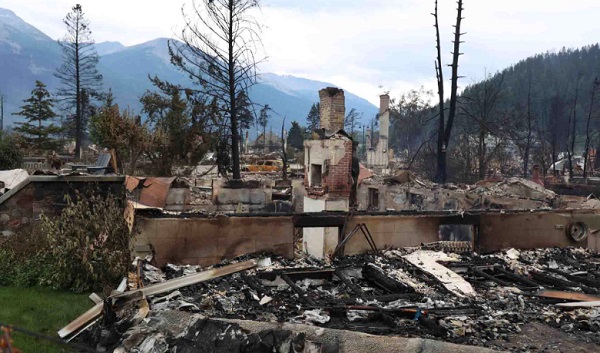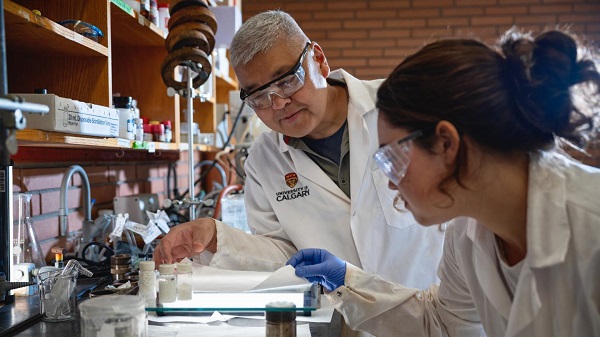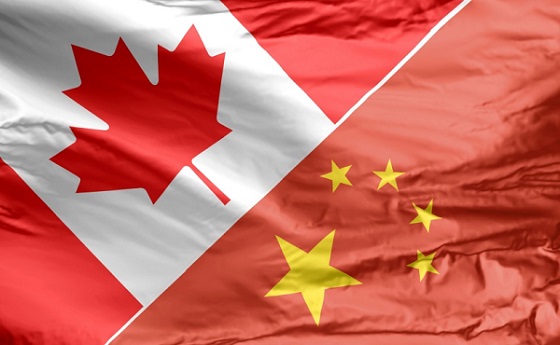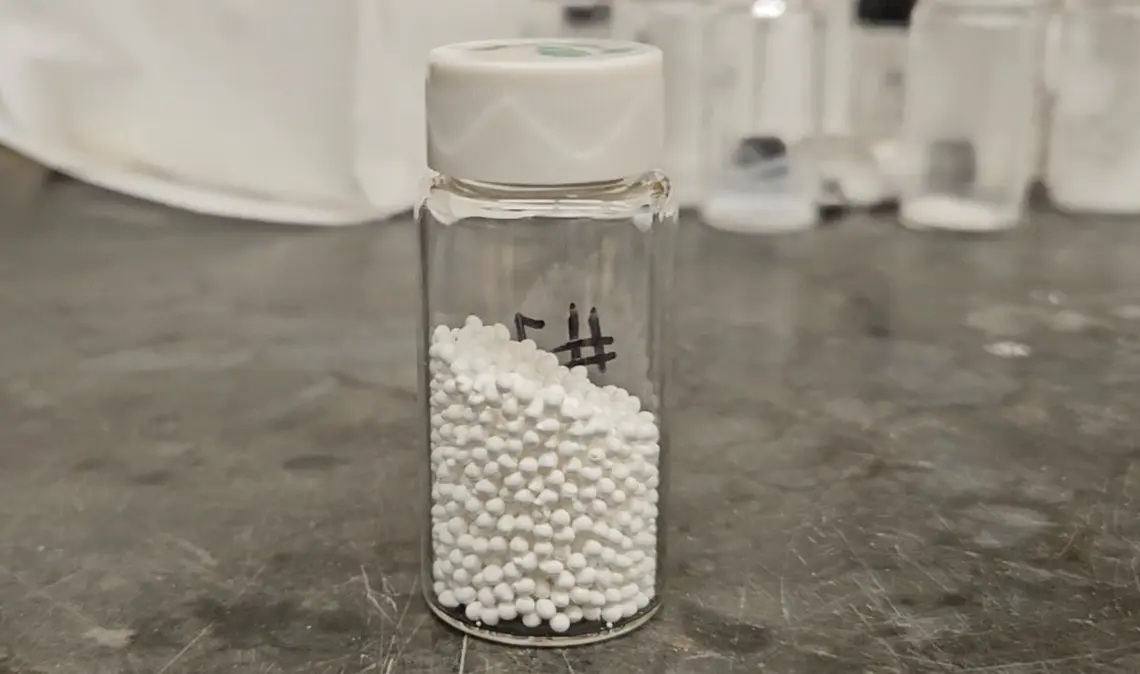Alberta
Province providing 250 modular homes to help ease housing crisis in Jasper

Supporting Jasper residents’ return home |
Alberta’s government continues to support recovery efforts in Jasper and is helping residents return to the community with $112 million in funding for interim housing.
Alberta’s government continues to support recovery efforts in Jasper and is helping residents return to the community with $112 million in funding for interim housing.
Alberta’s government is committed to ensuring Jasper residents are supported as the community recovers from the summer’s wildfire. To support rebuilding efforts in Jasper, government is committing $112 million to build interim housing for displaced Jasper residents and residents of Pine Grove Senior Citizens Manor.
Work on the sites in Jasper has already begun, and the first residents are expected to begin moving in as early as January 2025. Homes in Jasper will be available for essential service workers and support service workers, and other eligible Jasper residents who lost their homes and are employed in the area. Alberta’s government will ensure that interim homes are ready for eligible residents as quickly and efficiently as possible.
“Our entire country grieved when wildfire ravaged Jasper this past summer. We know the rebuilding process takes time, and we’re doing all we can to support Jasper’s recovery. Most of all, people want to return home, and the funding we have approved will speed up that process so folks can rebuild their lives and move forward sooner.”
“We know that Jasper residents are eager to get back home and Alberta’s government is committed to ensuring they have the supports they need throughout this rebuilding effort. When ready, these interim homes will address the immediate housing need in Jasper and provide a short-term housing option for those who are working in the town doing the critical work needed to support this rebuild.”
To support the interim housing needs of Jasperites, the government is supporting the construction of modular homes. It is estimated that this portion of the provincial funding will build 250 modular homes for eligible displaced Jasper residents. Modular homes are constructed off-site, in a controlled environment, to allow for all-season construction and accelerated schedules. They are installed using permanent foundations that ensure the safety and comfort of the occupants.
Interim housing units in Jasper will be provided at market rent, and applications and eligibility details will be released in the future. Units in Jasper will be sold at market value when they are no longer required for interim housing for Jasper recovery.
“This interim housing is a much-needed step forward in getting the community of Jasper back on track and getting people into homes. Alberta’s government will continue to work with the town and our partners to restore Jasper as quickly as possible.”
“On behalf of the people of Jasper, I extend our sincere gratitude to the Government of Alberta for their critical support in funding interim housing as we work to rebuild Jasper. This housing isn’t just about the buildings, it’s directly linked to our social and economic recovery including the mental well-being of the community as a whole.”
Alberta’s government is also supporting the residents of Pine Grove Manor with interim housing in Hinton. Pine Grove Manor was destroyed by the fire and this interim housing will keep residents close to their community while the seniors home is rebuilt. Up to 25 units of modular housing will be built for seniors in Hinton on a site that was given to the project by the Town of Hinton. These units in Hinton will later be used as affordable housing for the community. Work on these sites is expected to begin in January and the first seniors are expected to begin moving in as early as April 2025.
“The Evergreens Foundation is proud to work together with the province to move forward on this project with haste. We continue to keep the needs of the seniors who built our province in the forefront as we work through the Jasper recovery.”
A request for proposals will be released on both of these projects as the next steps in this process. Funding from Alberta’s government will be contributed to these projects over two fiscal years.
Quick facts
- The 2024 Jasper wildfire complex destroyed or damaged around 30 per cent of structures in Jasper, including the Pine Grove Seniors Citizens Manor, a government-owned building.
- Wildfire is an insurable event and insurance can cover costs for interim housing for insured individuals.
Alberta
Nobel Prize nods to Alberta innovation in carbon capture

From the Canadian Energy Centre
‘We are excited to bring this made-in-Canada innovation to the world’
To the naked eye, it looks about as exciting as baking soda or table salt.
But to the scientists in the University of Calgary chemistry lab who have spent more than a decade working on it, this white powder is nothing short of amazing.
That’s because the material they invented is garnering global attention as a new solution to help address climate change.
Known as Calgary Framework-20 (CALF-20 for short), it has “an exceptional capacity to absorb carbon dioxide” and was recognized in connection with the 2025 Nobel Prize in Chemistry.
“It’s basically a molecular sponge that can adsorb CO2 very efficiently,” said Dr. George Shimizu, a UCalgary chemistry professor who leads the research group that first developed CALF-20 in 2013.
The team has been refining its effectiveness ever since.
“CALF-20 is a very exciting compound to work on because it has been a great example of translating basic science into something that works to solve a problem in the real world,” Shimizu said.
Advancing CCS
Carbon capture and storage (CCS) is not a new science in Alberta. Since 2015, operating projects in the province have removed 15 million tonnes of CO2 that would have otherwise been emitted to the atmosphere.
Alberta has nearly 60 proposed facilities for new CCS networks including the Pathways oil sands project, according to the Regina-based International CCS Knowledge Centre.
This year’s Nobel Prize in Chemistry went to three of Shimizu’s colleagues in Japan, Australia and the United States, for developing the earliest versions of materials like CALF-20 between 1989 and 2003.
Custom-built molecules
CALF-20 is in a class called metal-organic frameworks (MOFs) — custom-built molecules that are particularly good at capturing and storing specific substances.
MOFs are leading to new technologies for harvesting water from air in the desert, storing toxic gases, and capturing CO2 from industrial exhaust or directly from the atmosphere.
CALF-20 is one of the few MOF compounds that has advanced to commercial use.
“There has been so much discussion about all the possible uses of MOFs, but there has been a lot of hype versus reality, and CALF-20 is the first to be proven stable and effective enough to be used at an industrial scale,” Shimizu said.
It has been licensed to companies capturing carbon across a range of industries, with the raw material now being produced by the tonne by chemical giant BASF.
Carbon capture filter gigafactory
Svante Inc. has demonstrated its CALF-20-based carbon capture system at a cement plant in British Columbia.
The company recently opened a “gigafactory” in Burnaby equipped to manufacture enough carbon capture and removal filters for up to 10 million tonnes of CO2 annually, equivalent to the emissions of more than 2.3 million cars.
The filters are designed to trap CO2 directly from industrial emissions and the atmosphere, the company says.
Svante chief operating officer Richard Laliberté called the Nobel committee’s recognition “a profound validation” for the entire field of carbon capture and removal.
CALF-20 expansion
Meanwhile, one of Shimizu’s former PhD students helped launch a spinoff company, Existent Sorbents, to further expand the applications of CALF-20.
Existent is working with oil sands producers, a major steel factory and a U.S.-based firm capturing emissions from other point sources, said CEO Adrien Côté.
“The first users of CALF-20 are leaders who took the risk of introducing new technology to industries that are shrewd about their top and bottom lines,” Côté said.
“It has been a long journey, but we are at the point where CALF-20 has proven to be resilient and able to survive in harsh real-world conditions, and we are excited to bring this made-in-Canada innovation to the world.”
Alberta
Thousands of Albertans march to demand independence from Canada

From LifeSiteNews
Thousands of Albertans marched upon the province’s capital of Edmonton this past Saturday in the “I Am Alberta Rally,” calling for the province to immediately secede from Canada in light of increasing frustration with the Liberal federal government.
The rally saw an estimated 20,000 to 30,000 people march on the steps of the Alberta legislative building, demanding that a referendum be held at once to allow Alberta to leave Canada.
“We can’t delay. We can’t slow down,” well-known freedom lawyer Keith Wilson said at the rally as he spoke to the crowd.
“This is our moment. This is our future. For our families, for our children, for Alberta. Alberta will be free.”
The group behind the rally, the Alberta Prosperity Project (APP), bills itself as a sovereignty advocacy group. As reported by LifeSiteNews earlier this year, the APP wants to put Alberta independence to a question to the people via a referendum.
The rally also comes after certain members affiliated with the APP such as Jeffrey Rath and Dr. Dennis Modry earlier the month met in Washington, D.C. with cabinet-level U.S. politicians to discuss Alberta’s potential independence from Canada.
U.S. President Donald Trump has routinely suggested that Canada become an American state in recent months, often making such statements while talking about or implementing trade tariffs on Canadian goods.
The APP on July 4 applied for a citizen-led petition presented to Elections Alberta that asks, “Do you agree that the Province of Alberta shall become a sovereign country and cease to be a province in Canada?”
The group is hoping to have the referendum on the ballot as early as next year and has accused the Liberal federal government of encroaching on Alberta’s ability to manage its own affairs.”
The group says an independent Alberta would allow it to “keep our resources, grow our economy, and reinvest in Alberta families, businesses and infrastructure.”
As it stands now, the referendum question has been referred to the courts to see whether or not it can proceed.
Alberta Conservative Premier Danielle Smith does not support a fully independent Alberta. However, she does advocate for the province to have more autonomy from Ottawa.
As reported by LifeSiteNews, Smith said her conservative government will allow but not support a citizen-led referendum on independence.
Despite not advocating for an outright separate Alberta, Smith’s government has not stood still when it comes to increasing provincial autonomy.
Smith’s United Conservative government earlier this year passed Bill 54, which sets the groundwork for possible independence referendums by making such votes easier to trigger. The bill lowers the signature threshold from 600,000 to 177,000.
As reported by LifeSiteNews last week, Smith’s government introduced a new law to protect “constitutional rights” that would allow it to essentially ignore International Agreements, including those by the World Health Organization (WHO), signed by the federal Liberal government.
The calls for independence have grown since Liberal leader Mark Carney defeated Conservative rival Pierre Poilievre.
Carney, like former Prime Minister Justin Trudeau before him, said he is opposed to new pipeline projects that would allow Alberta oil and gas to be unleashed. Also, his green agenda, like Trudeau’s, is at odds with Alberta’s main economic driver, its oil and gas industry.
-

 Internet1 day ago
Internet1 day agoMusk launches Grokipedia to break Wikipedia’s information monopoly
-

 Business1 day ago
Business1 day agoCanada heading into economic turbulence: The USMCA is finished and Canadian elbows may have started the real fight
-

 Business2 days ago
Business2 days agoCanada has given $109 million to Communist China for ‘sustainable development’ since 2015
-

 Business1 day ago
Business1 day agoBill Gates walks away from the climate cult
-

 MAiD2 days ago
MAiD2 days agoStudy promotes liver transplants from Canadian euthanasia victims
-

 Opinion2 days ago
Opinion2 days agoBritish Columbians protest Trump while Eby brings their province to its knees
-

 Business24 hours ago
Business24 hours agoFord’s Liquor War Trades Economic Freedom For Political Theatre
-

 National18 hours ago
National18 hours agoCanadian MPs order ethics investigation into Mark Carney’s corporate interests









